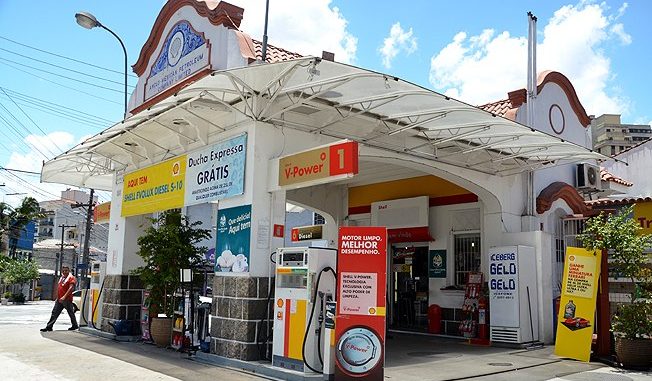
The drive from Paraguay to Rio de Janeiro was a long one. I crossed the chaotic border at the notorious smuggling town of Ciudad de Este to Foz do Iguacu. This put me on the Brazilian side of the triple frontier (Paraguay, Argentina and Brazil). Foz is a tourism Mecca for those who like their jungles wet. The falls are extremely impressive even though much of the water passing over the cliffs has just exited the largest hydroelectric dam in the world 90Km. north at the town of Itaipu. The world’s largest hydroelectric dam spans the Paran? River separating Paraguay and Brazil. Some 17% of the electric power produced by this dam meets the domestic supply requirements of the whole country of Paraguay (much of whose population use no electricity). The surplus is distributed eastwards through humming high-tension power lines, to fuel the Industrial might of southern Brazil.
From Foz I traveled 800 Km. eastwards to the north-south artery linking Montevideo, Uruguay, with the Atlantic coast of Brazil to the north. The junction town was the small city of Curitiba with a population of just 1.5 Million. From here, I picked up BR116 north, driving for three days through Sao Paolo (population 37 million), to Rio de Janeiro (Brazil’s most densely populated city with a population of 8 million).
Traffic was light on the toll-roads, the Tolls were plentiful and about two dollars for cars. More than 40% of the traffic was freight. The freight trucks run on diesel, produced locally by Brazil’s national oil company PetroBras. It comes in two grades, the cheaper, about seventy US cents a liter, and a premium grade for light trucks costing a few cents more.
For cars, there are many, many options. There are two grades of gasoline (‘commun’ & ‘additiva’), the two grades of diesel mentioned above (a common fuel option in Brazil for small and large cars and almost all 4WD and pick-ups). Supplementing these are pure alcohol, alcohol mix (25% alcohol and 75% gasoline, more common on the Paraguayan side of the border) and two liquid gas options, liquid petroleum gas LPG and natural gas (GNV, Gas Naturão Vehicular).
I filled up my Argentine converted vehicle with GNV wherever possible, a cubic meter costing between 40 and 55 cents. One cubic meter gets me about 15% further than a liter of gasoline, which costs about 85 cents, so driving on natural gas is roughly 50% cheaper than using gasoline.
Brazil’s fuel complexity may be a view to the future as traditional petroleum fuel sources simply dry up. Brazil is lucky to be a massive producer of hydroelectric power, gasoline, diesel, natural gas and alcohol, all from its own generous supplies of raw materials. However, Brazil’s cities are massive and the huge populations demand cheap electricity and cheap transport. This coupled with the need to export precious fuel supplies for balance of payment reasons are stretching the ingenuity of the Brazilian energy suppliers. Ironically Brazil exports petroleum to help pay off debt much of which was incurred building the massive hydroelectric plants which fuel it with cheap electricity. Many plants including Itaipu were designed and constructed by western suppliers from Italy, Germany and the US.
With internal demand and export requirements, Brazil is looking to its neighbors for help. Renewed democracy and huge poverty means that supplier nations are calling fowl: Paraguay on electricity pricing, and Bolivia on natural gas prices.
The primary importers of Bolivian gas are Brazil and Argentina. Both countries import Paraguayan electricity Brazil from Itaipu and Argentina from Yacyreti-Apipe. Their petroleum companies, PetroBras and YPF-Repsol respectively, are the primary producers of gas in Bolivia. Gas unlike crude travels best by pipeline, not Barrels and Tankers so Bolivia’s neighbors, (Chile excepted), are their primary customers.
Political strains between energy suppliers and consumers are nothing new, Iraq and the USA springs to mind, but competing interests will have to be handled sensitively if Mercosur is to hold together. Long term planning is afoot, [c.f. Chavez’s PetroSur project] but energy supply constraints have their short-term priorities! If cheap natural gas and electricity supplies are not available, Brazil’s Industrial plants and mega-cities will find it difficult to compete for imported supplies, the same holds true for Argentina with 40% of its cars depending on natural gas which sells for a third of the price of gasoline. On a political level Venezuelan President Chavez’s support for nationalization and indigenous rights activists are falling in direct contravention to the industrial and domestic supply requirements of Mercosur’s founders: Brazil and Argentina.
Whatever will play out both in Bolivia and in Paraguay will not just be influenced by the US and Western interests. Methinks the embassies of Venezuela, Argentina and Brazil will be buzzing with activity in the short-term future.

Some of us who’ve made long car journeys with you might unkindly claim that all your vehicles had a source of “natural” gas of one sort or another!!!
Say hi to your Mum for me.
Thom just offered your photo on the website a bite of his toast, cheers.